Our research area covers two aspects of petroleum reservoir engineering:
(1) Enhanced Oil and Gas Recovery (EOGR) and Reservoir Characterization (RC).
Reservoir characterization is critical in the assessment of enhanced oil and gas recovery processes.
The members of the RC research team focus on characterization of fracture networks and fracture surfaces,
permeability estimation for complex carbonate systems, and up-scaling:
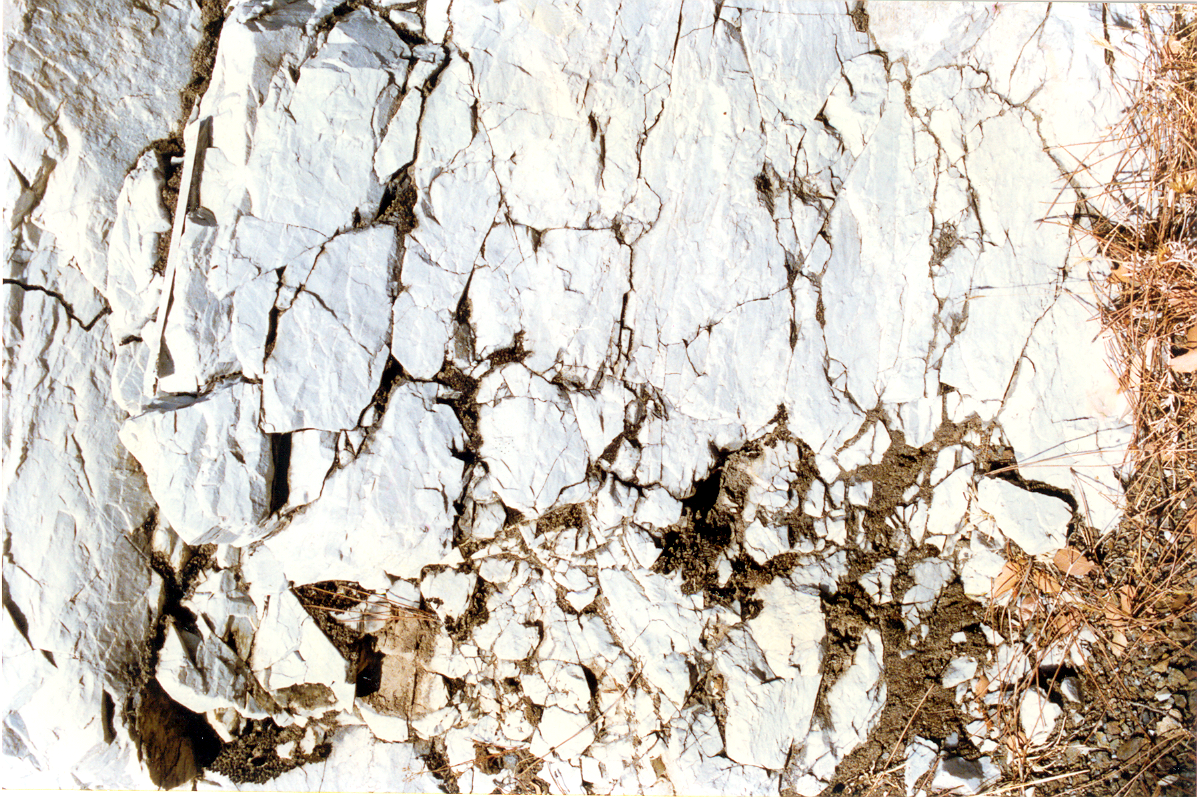 Outrcop fracture pattern of a producing geothermal reservoir (marble)
Outrcop fracture pattern of a producing geothermal reservoir (marble)
- Jafari, A.R. and Babadagli, T.: “A Sensitivity Analysis for Effective Parameters on 2-D Fracture Network Permeability,”
accepted for publication in SPE Res. Eval. and Eng, 2008.
- Bogatkov, D. and Babadagli, T.: “Integrated Modeling and Statistical Analysis of 3-D Fracture Network of the Midale Field,”
IPTC 12165, Int. Petr. Tech. Conf. (IPTC), 3-5 Dec. 2008, Kuala Lumpur, Malaysia.
- Babadagli, T., Sahin, S., Kalfa, U., Celebioglu, D., Karabakal, U. and Topguder, N.N.: “Development of Heavy-Oil Fractured Carbonate Bati Raman Field:
Evaluation of Steam Injection Potential and Improving On-Going CO2 Injection,” SPE 115400, 2008 SPE Annual Tech. Conf. and Exh., Denver, CO, 21-24 Sept.
- Al-Anazi, A. and Babadagli, T.: “Automatic Fracture Network Model Update using Smart Well Data and Artificial Neural Networks,”
SPE 113282, 2008 SPE EUROPEC, Rome, Italy, 9-12 June.
- Jafari, A.R. and Babadagli, T.: “A Sensitivity Analysis for Effective Parameters on Fracture Network Permeability,”
SPE 113618, 2008 SPE/AAPG Western Regional Meeting, Bakersfield, CA, 31 March-2 April.
- Al-Anazi, A. and Babadagli, T.: “Use of Real-Time Dynamic Data to Generate Fracture Network Models,” IPTC 11492,
2007 Int. Petr. Tech. Conf. (IPTC), Dubai, 4-6 Dec.
- Babadagli, T.: “Effective Permeability Estimation for 2-D Fractal Permeability Fields,”
Mathematical Geology , vol. 38, no 1, 2006.
- Babadagli, T., Al-Bemani, A. and Al-Shammakhi, K.: “Numerical Estimation of the Degree of Reservoir Permeability Heterogeneity Using Pressure Draw-Down Tests,” Transport in Porous Media, vol. 57, no. 3, Dec. 2004, 313-331.
- Boukadi, F., Al-Bemani, A., and Babadagli, T.: “Investigating Uncertainties in Relative Permeability
Measurements,” Energy Resources, vol. 27, 2005, 719-728.
- Babadagli, T. and Al-Salmi, S.: “A Review of Permeability Prediction Methods for Carbonate Reservoirs Using Well Log Data,” SPE Res. Eval. and Eng., vol. 7, no. 2, (April 2004) 75-88.
- Babadagli, T.: “Scanline Method to Determine the Fractal Nature of 2-D Fracture Networks,” Mathematical Geology, vol. 34, no. 6, August 2002.
- Babadagli, T. and Develi, K.: “Fractal Characteristics of Rocks Fractured Under Tension,” Theoretical and Applied Frac. Mech., vol.39, no.1, 2003, 73-88.
 Computer generated 32x32 grids Fractional Brownian Motion permeability fields
Computer generated 32x32 grids Fractional Brownian Motion permeability fields
Our recent research in the area of fracture surface characterization includes the experimental
identification of fracture surface roughness:
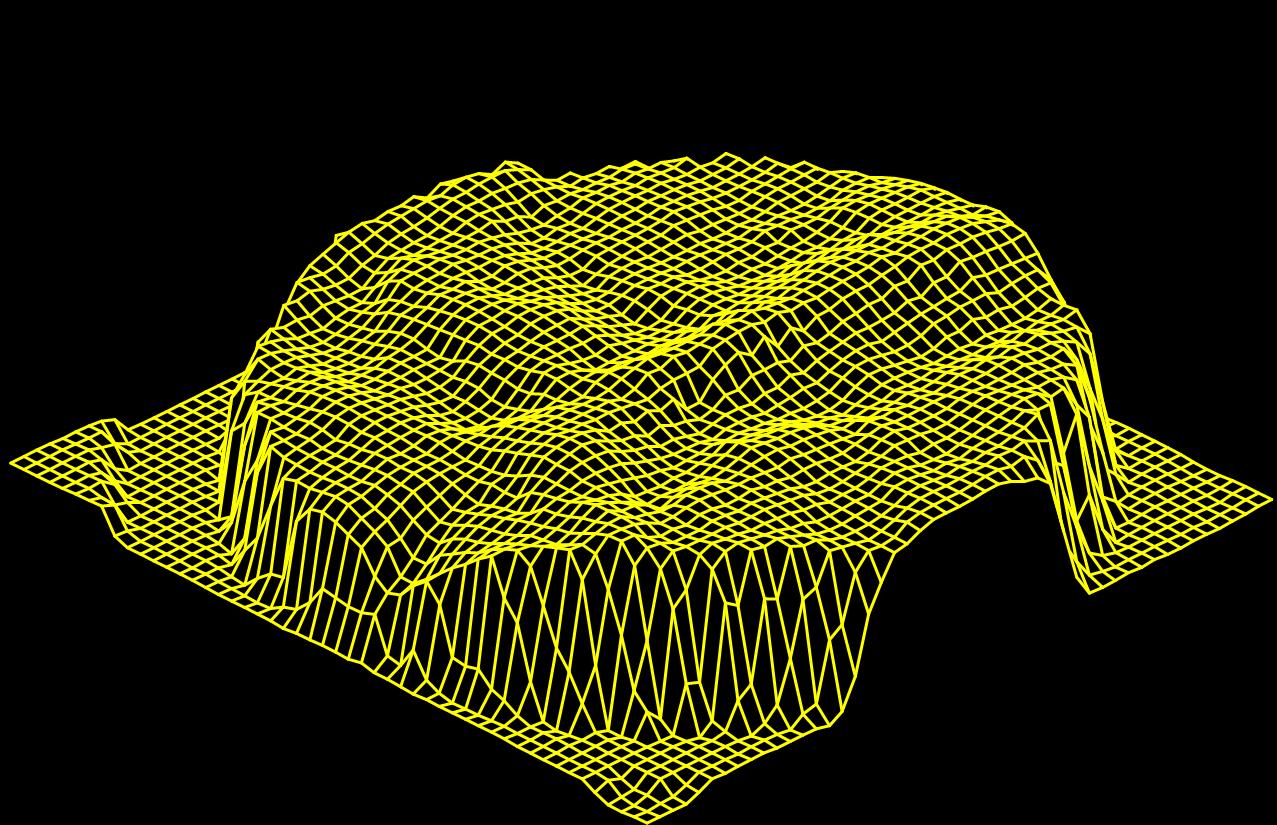 Scanned surface of 2-inch diameter natural fracture surface
Scanned surface of 2-inch diameter natural fracture surface
- Babadagli, T. and Develi, K.: “On the Application of Methods Used to Calculate Fractal Dimension of Fracture Surfaces,” Fractals, vol. 9, no. 1, 2001, 105-128.
- Develi, K., Babadagli, T. and Comlekci, C.: “A New Computer Controlled Surface Scanning Device for Measurement of Joint Surface Roughness,” Computers and Geosciences, vol. 27, no:3, 2001, 265-277.
This fills a significant gap in the area of fracture characterization, which is a need in modeling fluid flow in a single fracture:
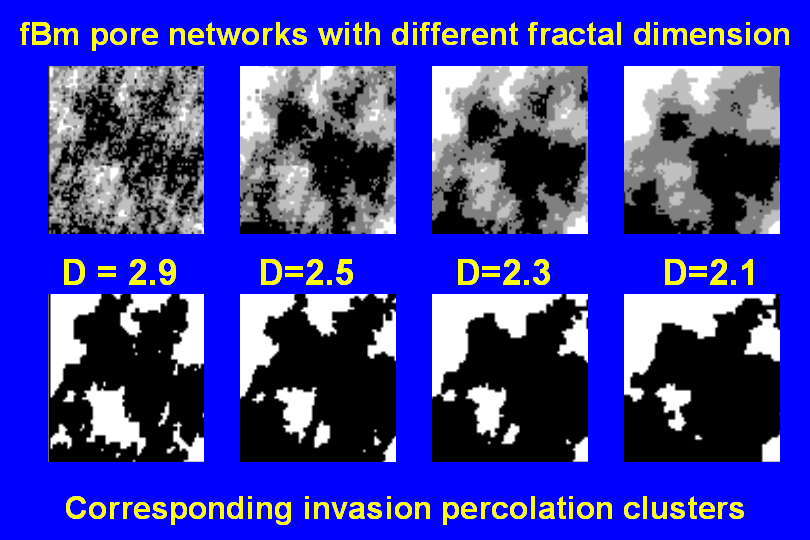
- Ozdemirtas, M., Babadagli, T. and Kuru, E.: “Effects of Fractal Fracture Surface Roughness on the Borehole Ballooning,”
Vadose Zone Journal, in print, 2008.
- Ozdemirtas, M., Babadagli, T. and Kuru, E.: “Experimental and Numerical Investigations of Borehole Ballooning in Rough Fractures,”
SPE Drilling and Comp., in print, 2008.
- Ozdemirtas, M., Babadagli, T., and Kuru, E.: “Numerical Modeling of Borehole Ballooning/Breathing – Effect of Fracture Roughness,”
CIPC 2007-038, CIM 58th Annual Tech. Meet., Canadian Int. Petroleum Conf., Calgary, Canada, 12-14 June 2007.
- Babadagli, T.: “Analysis of The Displacement in Fractal Lattices With Different Number of Grids,” Fractals, vol. 13, no 3, Sept. 2005, 207-213.
- Babadagli, T. and Develi, K.: “Fractal Fracture Surfaces and Fluid Displacement Process in Fractured Rocks”, paper no ICF100570OR, 10th Int. Conf. of Fracture, 3-7 Dec., Honolulu, Oahu, Hawaii, 2001.
The members of the EOGR research team focus on the experimental, numerical, and stochastic modeling of immiscible and miscible displacement,
and chemical and heat injection in fractured and non-fractured reservoirs:
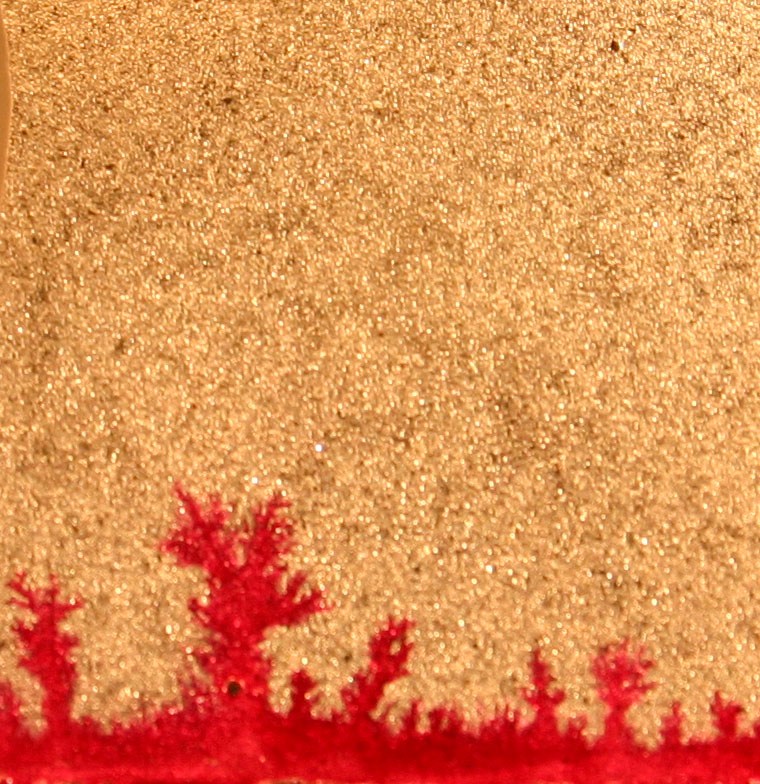  Displacement patterns obtained during mineral oil displacement by pentane on 2-D glass bead model, LEFT: Horizontal, RIGHT: Vertical
Displacement patterns obtained during mineral oil displacement by pentane on 2-D glass bead model, LEFT: Horizontal, RIGHT: Vertical
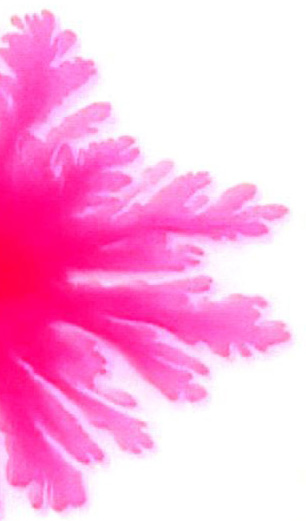 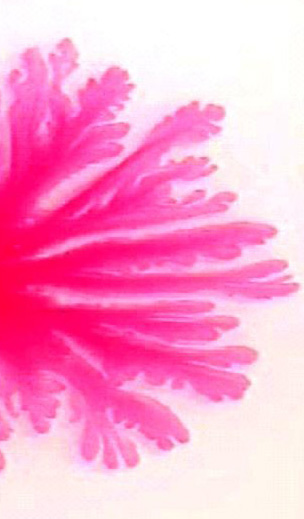 Viscous fingering during mineral oil displacement by pentane with (RIGHT) and without ultrasonic energy (LEFT)
Viscous fingering during mineral oil displacement by pentane with (RIGHT) and without ultrasonic energy (LEFT)
- Naderi, K. and Babadagli, T.: “Clarifications on Oil/Heavy Oil Recovery under Ultrasonic Radiation through Core and 2-D Visualization Experiments,”
accepted for publication in J. Can. Petr. Tech., 2008.
- Trivedi, J. and Babadagli, T.: “Efficiency Analysis of Greenhouse Gas Sequestration during Miscible CO2 Injection in Fractured Oil Reservoirs,”
Env. Sci. and Tech., in print, 2008.
- Trivedi, J. and Babadagli, T.: “Experimental and Numerical Modeling of the Mass Transfer between Rock Matrix and Fracture,”
Chem. Eng. Jour. , in print, 2008.
- Hatiboglu, C.U. and Babadagli, T.: “Pore-scale studies of spontaneous imbibition into oil-saturated porous media,”
Phys. Review E , vol. 77, 066311-11, 2008.
- Hatiboglu, C.U. and Babadagli, T.: “Diffusion Mass Transfer in Miscible Oil Recovery: Visual Experiments and Simulation,”
Transport in Porous Media, vol. 74, 2008, 169-184.
- Hatiboglu, C.U. and Babadagli, T.: “Lattice-Boltzmann Simulation of Solvent Diffusion into Oil Saturated Porous Media,”
Phys. Review E, vol. 76, 066309, 2007.
- Hamida, T. and Babadagli, T.: “Fluid-Fluid Interaction during Miscible and Immiscible Displacement under Ultrasonic Waves,”
European Physical Journal B, vol. 60, no. 4, 447-462, 2008.
- Hamida, T. and Babadagli, T.: “Effects of Ultrasonic Waves on the Interfacial Forces between Oil and Water,”
Ultrasonics Sonochemistry (Short Communication-peer reviewed), vol 15, 2008, 274-278.
- Hamida, T. and Babadagli, T.: “Displacement of Oil by Different Interfacial Tension Fluids under Ultrasonic Waves,”
Coll. and Surf. A: Physicochemical and Eng. Aspect, vol. 316, 176-189, March., 2008.
- Trivedi, J. and Babadagli, T.: “Efficiency of Diffusion Controlled Miscible Displacement in Fractured Porous Media,”
Transport in Porous Media, vol. 71, no. 3, Feb. 2008.
- Hatiboglu, C.U. and Babadagli, T.: “Oil Recovery by Counter-Current Spontaneous Imbibition:
Effects of Matrix Shape Factor, Gravity, IFT, Oil Viscosity, Wettability, and Rock Type,”
J. Petr. Sci. and Eng., vol. 59, 2007, 106-122.
- Hamida, T. and Babadagli, T.: “Analysis of Capillary Interaction and Oil Recovery under Ultrasonic Waves,”
Transport in Porous Media, 70 (2), 2007, 231-255.
- Trivedi, J., and Babadagli, T.: “Efficiency of Miscible Displacement in Fractured Porous Media,” SPE 100411,
SPE Western Reg. Meet., 8-10 May 2006, Anchorage, Alaska.
- Hamida, T. and Babadagli, T.: "Effects of Ultrasonic Waves on Immiscible and Miscible Displacement in Porous Media," SPE 95327, 2005 SPE Annual Technical Conference and Exh., Dallas, TX, 9-12 Oct., 2005.
- Hatiboglu, C. U. and Babadagli, T.: “Experimental and Stochastic Modeling of Diffusion Controlled Matrix-Fracture Transfer in Naturally Fractured
Reservoirs,” SPE 95474, 2005 SPE Annual Technical Conference and Exh., Dallas, TX, 9-12 Oct., 2005.
- Hatiboglu, C. U. and Babadagli, T.: “Primary and Secondary Oil Recovery from Different Wettability Rocks by Counter-Current Diffusion and Spontaneous
Imbibition,” SPE 94120, SPE/DOE Symp. on Imp. Oil Rec. Conf. 22-26 April 2006, Tulsa, OK.
- Sola, B.S., Rashidi, F. and Babadagli, T.: “Temperature Effects on the Heavy Oil-Water Relative Permeabilities of Carbonate Rocks,”
J. Petr. Sci. and Eng. J. Petr. Sci. and Eng., vol. 59, 2007, 27-42.
- Hamida, T. and Babadagli, T.: “Immiscible Displacement of Oil by Water in Consolidated
Porous Media due to Capillary Imbibition
under Ultrasonic Waves,” J. of the Acoustical Soc. of America , vol. 122 (3) Sept. 2007, 1539-1555.
- Babadagli, T. and Al-Bemani, A.: “Investigations on Matrix Recovery During Steam Injection into
Heavy-Oil Containing Carbonate Rocks,” J. Petr. Sci. and Eng., vol. 53, 2007, 259-274.
- Babadagli, T., Al-Bemani, A. Boukadi, F. and Al-Maamari, R.: “A Laboratory Feasibility Study of Dilute Surfactant Injection for the Yibal Field, Oman,” J. of Petroleum Science and Eng., vol. 48, no 1-2, 2005, 37-52.
- Babadagli, T.: “Analysis of Oil Recovery by Spontaneous Imbibition of Surfactant Solution,” Oil and Gas Sci. and Tech. – Revue de l’IFP , vol. 60, no 4, 2005, 697-710.
- Babadagli, T. and Boluk, Y.: “Oil Recovery Performances of Surfactant Solutions by Capillary Imbibition,” J. Coll. and Int. Sci., vol. 282, no 1, Feb. 2005, 158-171.
- Babadagli, T.: “Improving Matrix-Fracture Transfer Using Chemicals and Thermal Methods in Fractured Heavy-Oil Reservoirs,” Petroleum Science and Technology, vol. 21, no. 5&6, 2003, 949-962.
- Babadagli, T.: “Selection of Proper Enhanced Oil Recovery Fluid for Efficient Matrix Recovery in Fractured Oil Reservoirs,” Colloids and Surface A: Physicochemical and Engineering Aspects , vol. 223, no. 1-3, 2003, 157-175.
- Babadagli, T.: “Evaluation of EOR Methods for Heavy-Oil Recovery in Naturally Fractured Reservoirs,” J. of Petroleum Science and Eng., vol. 37, no.1-2, Feb. 2003, 25-37.
One of our main research areas is to describe the matrix-fracture interaction in fractured oil reservoirs at laboratory and
field scale for different fluid types and matrix characteristics:
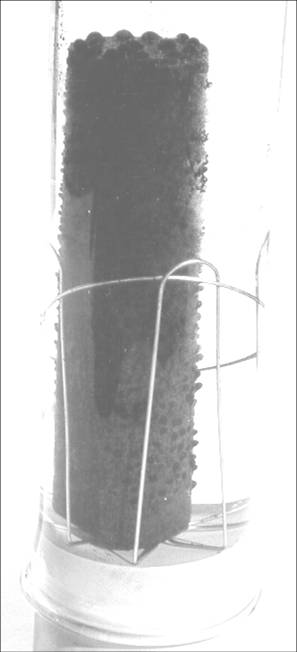 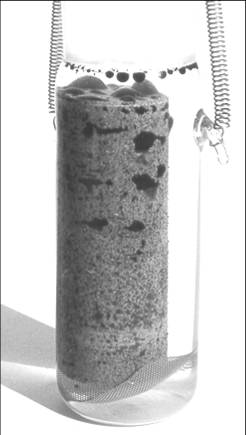
LEFT: Heavy-oil (~3000 cp) recovery from Berea sandstone by capillary imbibition RIGHT: Light-oil (~7 cp) recovery from Indiana limestone by capillary imbibition
- Hatiboglu, C. U. and Babadagli, T.: “Dynamics of Spontaneous Counter-Current Imbibition For Different Matrix Shape Factors, Interfacial Tensions, Wettabilities and Oil Types,” Paper 2004-091, CIM 55th Annual Technical Meeting, Canadian International Petroleum Conference, Calgary, Canada, 8-10 June 2004.
- Babadagli, T.: “Evaluation of EOR Methods for Heavy-Oil Recovery in Naturally Fractured Reservoirs,” J. of Petroleum Sci. and Eng., vol. 37, no.1-2, Feb. 2003, 25-37.
- Babadagli, T.: “Optimum Steam Injection Strategies for Naturally Fractured Reservoirs”, Petroleum Science and Technology, vol. 18, no.3-4, 375-405, 2000.
Up-scaling techniques for these methods for more practical uses for industry were also proposed:
- Trivedi, J. and Babadagli, T.: “Scaling Miscible Displacement in Fractured Porous Media Using Dimensionless Groups,,”
J. Petr. Sci. and Eng., vol. 61, 2008, 58-66.
- Hatiboglu, C.U. and Babadagli, T.: “Primary and Secondary Oil Recovery
from Different Wettability Rocks by Counter-Current Diffusion and Spontaneous Imbibition,”
SPE Res. Eval. and Eng., vol. 11, No. 2 (April 2008) 418-428.
- Babadagli, T.: “Scaling of Co-Current and Counter-Current Capillary Imbibition for Surfactant and Polymer Injection in Naturally Fractured Reservoirs” SPE Journal (Dec. 2001) 465-478.
- Babadagli, T.: “Scaling of Capillary Imbibition under Static Thermal and Dynamic Fracture Flow Conditions” J. of Petroleum Science and Eng., vol. 33, no. 4, 223-239, 2002.
The EOGRRC group also conducts research through collaboration with industry to propose
immediate solutions to their problems:
- Babadagli, T., Sahin, S., Kalfa, U., Celebioglu, D., Karabakal, U. and Topguder, N.N.: “Development of Heavy-Oil Fractured Carbonate Bati Raman Field:
Evaluation of Steam Injection Potential and Improving On-Going CO2 Injection,” SPE 115400, 2008 SPE Annual Tech. Conf. and Exh., Denver, CO, 21-24 Sept.
- Babadagli, T., Al-Bemani, A. Boukadi, F. and Al-Maamari, R.: “A Laboratory Feasibility Study of Dilute Surfactant Injection for the Yibal Field, Oman,” J. of Petroleum Science and Eng., vol. 48, no 1-2, 2005, 37-52.
- Babadagli, T. and Al-Salmi, S.: “A Review of Permeability Prediction Methods for Carbonate Reservoirs Using Well Log Data,” SPE Res. Eval. and Eng., vol. 7, no. 2, (April 2004) 75-88.
- Trivedi, J., Babadagli, T., Lavoie, R., and Nimchuk, D.: “Acid Gas Sequestration During Tertiary Oil Recovery: Optimal Injection Strategies and Importance of Operational Parameters,” Paper No. 2005-088, CIM 56th Annual Technical Meeting, Canadian International Petroleum Conference, Calgary, Canada, 7-9 June 2005.
- Babadagli, T., Al-Bemani, A., Boukadi, F. and Iyoho, W. A.: “EOR Possibilities for Development of a Mature Light-Oil Reservoir in Oman,” SPE 72110, 2001 SPE Asia Pac. Imp. Oil Rec. Conf., Kuala Lumpur, Malaysia, Oct. 8-9, 2001.
More recently, we initiated a research program on heavy-oil/bitumen recovery:
- Hascakir, B., Babadagli, T. and Akin, S.: “Experimental and Numerical Simulation of Oil Recovery from Oil Shales by Electrical Heating,”
Energy and Fuels, in print, 2008.
- Babadagli, T., Burkus, Z., Moschopedis, S.E., and Ozum, B.: “Bitumen Extraction from Oil Sands using CaO (Lime) and Ozone,”
SPE 117677, 2008 SPE Int. Thermal Oper. and Heavy-Oil Symp., Calgary, AB, Canada, 20-23 Oct.
- Al-Bahlani, A.M. and Babadagli, T.: “Heavy-Oil Recovery in Naturally Fractured Reservoirs with Varying Wettability by Steam Solvent Co-Injection,”
SPE 117626, 2008 SPE Int. Thermal Oper. and Heavy-Oil Symp., Calgary, AB, Canada, 20-23 Oct.
- Al-Bahlani, A.M. and Babadagli, T.: “A Critical Review of the Status of SAGD: Where Are We and What is Next?”
SPE 113283, 2008 SPE/AAPG Western Reg. Meet., Bakersfield, CA, 31 March-2 April.
|
|
|
 |















